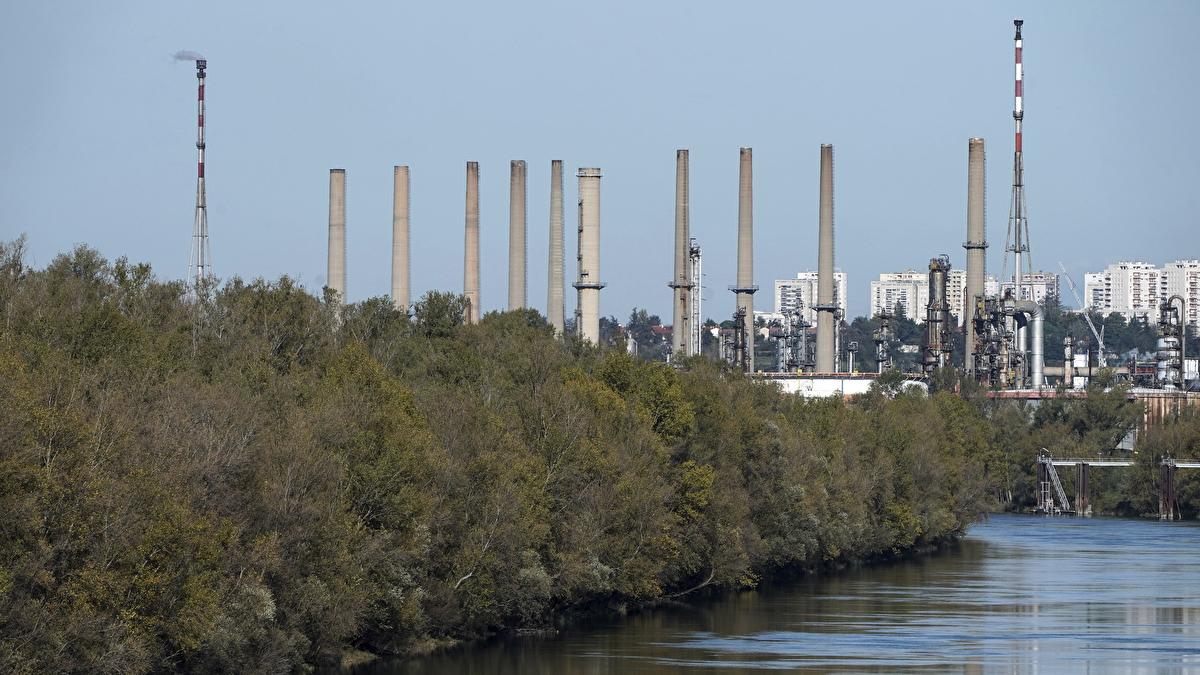
LONDON - Global oil demand growth needs to accelerate in coming months or the market will struggle to absorb an increase in oil supply that OPEC+ is planning to make from October, according to data, analysts and industry sources.
Oil demand growth in the first seven months of the year from top consumer the United States had failed to meet some expectations even before renewed fears of a US recession triggered a global stock and bond sell-off this week.
If the economy slows further, oil demand growth will likely slow with it. That will mean OPEC+ would either have to delay plans to pump more oil or accept lower prices for higher supply, analysts said.
"In current circumstances of significant risk of recession, it is unlikely OPEC+ would move forward with the planned October increases," said Gary Ross, CEO of Black Gold Investors and a veteran OPEC-watcher.
The price of oil has fallen below $80 per barrel in August – less than most members of OPEC+, or the Organization of the Petroleum Exporting Countries and allies such as Russia, need to balance their budgets.

"Oil demand definitely has a downside risk," said Neil Atkinson, an independent analyst who previously worked at the International Energy Agency, citing concern about US economies.
"It's very difficult to see how prices can rise significantly if demand is slower than we thought" he said, adding that he expected OPEC+ to hit pause on its output increase.
In the United States, oil consumption through July has risen by 220,000 bpd on the year to average 20.25 million bpd, according to Reuters calculations based on government estimates. Demand will need to accelerate to reach the government's 2024 forecast of 20.5 million bpd.
Whether or not global demand hits the heights needed to absorb additional supplies this year is difficult to gauge because of a record variation in where the world's most respected oil demand analysts at OPEC and the IEA measure demand to date.
ALSO READ: OPEC+ extends output cuts to support oil prices
There is a time lag on oil consumption data, and preliminary figures are often revised. That leaves forecasters including best estimates in some of their demand figures.
OPEC pegs global demand growth at 2.15 million bpd in the first half of 2024, while the IEA estimates it was 735,000 bpd. The IEA advises industrialised countries on energy policy.
OPEC's estimate of first-half demand growth is little changed from what it was at the start of the year. The IEA has cut its estimate of first-half demand growth from 1.19 million bpd forecast in January.
Global growth would need to accelerate a little in the second half if OPEC estimates on first-half demand were correct. But if the IEA is right, demand would need to accelerate rapidly.

The second half is typically the period of highest consumption as the simple fact of global economic growth increases oil demand and because it includes the peak driving season, Northern Hemisphere harvest and purchases to prepare for winter.
For demand growth to hit OPEC's full-year prediction, it would need to accelerate to an average of 2.30 million bpd in the second half, according to Reuters calculations. Demand needs to grow by 1.22 million bpd in the second half to reach the IEA's full-year prediction.
OPEC and the IEA are scheduled to update their demand forecasts next week.
ALSO READ: OPEC+ members extend oil output cuts to second quarter
OPEC+ supply increase
OPEC+ last week confirmed its plan to start raising production from October with the caveat that it could be paused or reversed if needed.
The increase is predicated on demand hitting OPEC's forecast, which would increase the need for oil from the producer group and its allies. OPEC+ pumps more than 40 percent of the world' s crude.
Should OPEC's demand prediction be realised, the demand for crude from OPEC+ countries is forecast to reach 43.9 million bpd in the fourth quarter, up from production of 40.8 million bpd in June, in theory allowing room for extra output.
OPEC+ still has a month to decide whether to start releasing the oil from October, and the group will study oil market data in the coming weeks, a source close to the group said.
Saudi Aramco CEO Amin Nasser said on Tuesday he expected growth of between 1.6 million and 2 million bpd in the second half of the year.
Two OPEC sources said it was unclear if demand was rising as rapidly as needed to meet OPEC's third-quarter forecast. OPEC did not respond to a request for comment.

US demand not clear
Global jet demand is expected this year to surpass 2019 levels, according to the International Air Transport Association, although IATA said in June that international travel in Asia remained subdued.
In top oil consumer the United States, gasoline demand has proven hard to gauge: revisions to official data last week showed May demand at the highest level since August 2019. Earlier estimates and independent trackers pegged demand below last year.
READ MORE: OPEC, IEA diverge further in 2024 oil demand forecasts
Dour economic data from the United States could also spell trouble for oil markets, especially for diesel. US diesel demand was about 4 percent lower in the first five months of this year than in 2023, according to EIA data.


